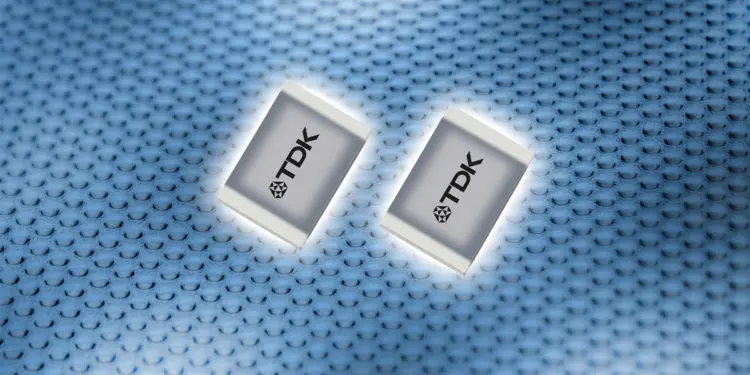TDK Corporation presents a new packing unit for CeraCharge™, the world’s first SMD technology solid-state rechargeable battery, in the compact size EIA 1812 (4.4 x 3.0 x 1.1 mm3).
The packing unit (B73180A0101M199) includes 10 blister-packed CeraCharge batteries which come in a vacuum-sealed plastic bag. The components are manufactured in regular series production and are suitable for test purposes, prototype construction and the installation of pilot lines. The packing unit can be obtained quickly and easily from selected TDK service distributors.
CeraCharge can be recharged more than 1,000 times, and has a capacity of 100 µAh at a nominal voltage of 1.5 V. Currents in the range of a few mA can also be rapidly drawn. Thanks to the SMD technology, it is simple to fit the batteries and process them in reflow soldering processes, which in turn, reduces the production costs of the device. CeraCharge is designed for a temperature range of -20 °C to +80 °C.
Unlike most ordinary technologies, CeraCharge is a solid-state rechargeable battery that uses a ceramic solid as electrolyte instead of liquid electrolyte, thus eliminating the risk of fire, explosion or leakage of electrolyte fluid. In a similar way to ceramic capacitors, CeraCharge is based on multilayer technology and combines a relatively high energy density in a very compact space, with process security, when manufacturing multilayer construction components.
To increase capacity and voltage, individual CeraCharge chips can be connected in series and in parallel as required, opening up a very wide spectrum of potential uses – especially in IoT applications. For example, this could include real time clocks, Bluetooth beacons, wearables or energy harvesting.
Main fields of application
- IoT applications; e.g. real time clocks, Bluetooth beacons, energy harvesting
Main features and benefits
- Compact SMD size EIA 1812
- Large temperature range from -20 °C to +80 °C
- Rechargeable more than 1,000 times
- Simple to fit and process with reflow soldering processes
- Multilayer technology, as is also used in MLCCs
- The use of a ceramic solid as an electrolyte also eliminates the risk of fire, explosion or leakage of electrolyte fluid
































